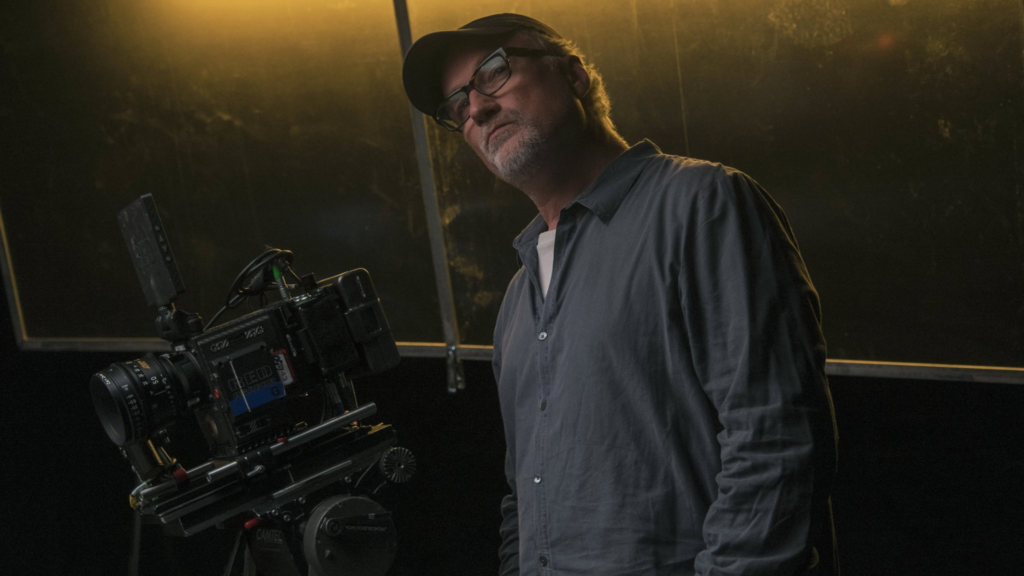
Chosen auteur


Role 1 : Sound
Responsible for creating the sound and blending and editing sounds in post-production. This includes creating sounds such as Foley, non-diegetic sounds and ambient sounds and editing them into my film to enhance the tone or the narrative. Sound is used in film for many reasons like to reveal the movie’s story, to provide audience awareness and expectation, to express a point of view of storyteller or character, to provide rhythm, to provide emphasis to provide characterization or to provide continuity.

Professional Inspiration
My inspiration for sound is Mikkel E.G. Nielsen’s use of sound in the film Sound of Metal as it is a very interesting artistic interpretation of a musicians struggle with going deaf and the technical use of sound is very astounding. His use of sound is very creative
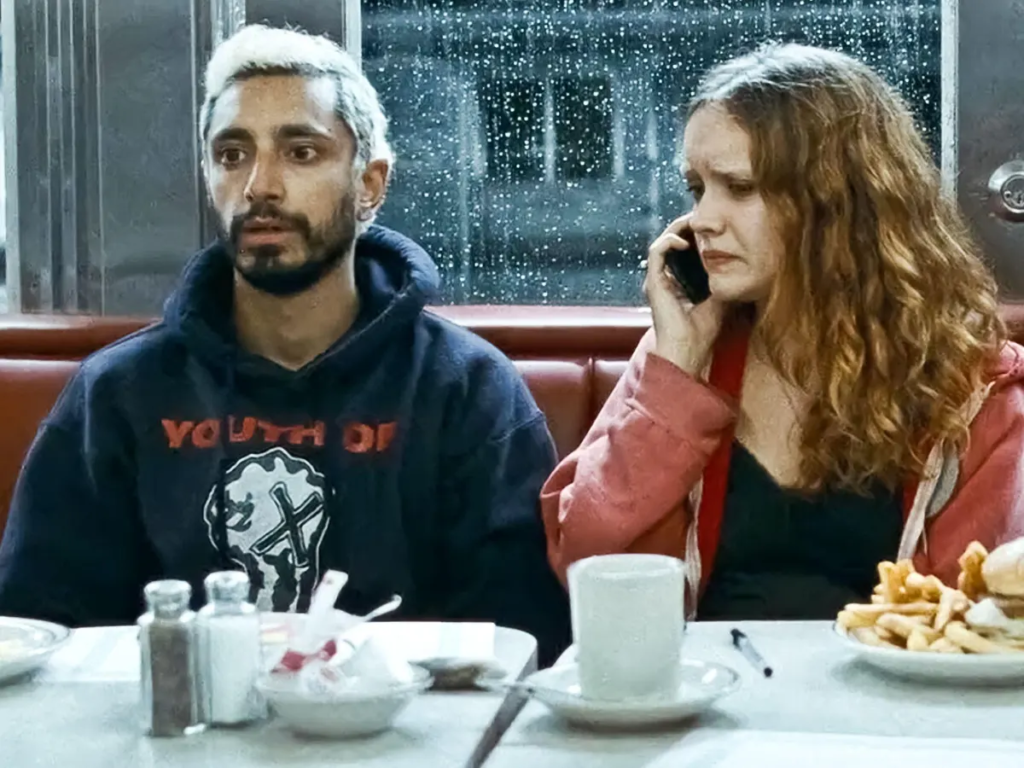

The role of sound in film can be split into two sections: the sound editor and the sound mixer. A sound editor records the sound required for a production. This can be done in a multitude of ways, including composition of music; Foley sound, the art of mimicking and creating new sounds for film pieces in a studio; as well as on set recording. The other side of this is sound mixing. A sound mixer makes sure all the sound recorded by the sound recorder are put together, layered and are cohesive within a production. Sound mixers can incorporate techniques such as fade-in/outs in sound; J and L-cuts; narration and scores into production.


American film composer, Nicholas Britell, is famous for his work on films such as 12 Years a slave, (2013), Cruella, (2021) and especially Moonlight, (2017). His work on Moonlight, directed by Barry Jenkins, in particular inspires me due to his confidence to create and utilise scores to enhance the power of some scenes. For example, there is the intense music that reoccurs whenever Chiron remembers his Mother screaming at him in the corridor; or the emotional track the follows when Juan takes Chiron to the beach and teaches him how to swim. In each scene, the score turns into a compilation and almost acts like a non-diegetic ‘needle-drop’ moment.

Editing is a key factor within film when it comes to maintaining the flow and rhythm of a narrative or scene. Within Damien Chazelle’s 2014 film Whiplash, particularly in the final scene of the picture, he uses fast-paced, harsh editing techniques to constantly build tension – keeping audiences on the edge of their seats for the entirety of the scene’s duration.

The final scene begins with a heavy sense of defeat; with longer takes for each shot, contrasting the more rapid movements between scenes when Miles Teller’s character, Andrew, is focused and playing the drums, of which those match on action shots seem to create a feeling of triumph as Andrew is more ‘in his element’. However, within this section, Andrew’s father, played by Paul Reiser, is rushing to comfort him, in a combination of various short-take shots that Chazelle used to display the unconditional support Andrew’s father has for him, despite not understanding Andrew’s passion himself.
Each take begins to decrease in length gradually as Andrew walks back onto the stage, unwilling to give up after J.K. Simmons’ character, Fletcher, set him up to fail. The use of this technique quickly turns the feeling of hopelessness into a tense, exciting atmosphere that builds the foundation for the conclusion of the film. Chazelle’s intent here is clearly to keep the audience interested right up until the last second of the film’s runtime, much like how he did with the rest of the film, constantly asking the question of how far Andrew will go to achieve his goal.

Andrew’s final performance begins abruptly, with an unexpected shot change that careers the tone of the scene back into a high-speed rhythmic montage that the audience is used to. The next few shots grow closer toward Andrew’s face with each cut, presenting Andrew’s seething hatred and desire to prove Fletcher wrong – creating what could be considered a non-physical fight scene as Andrew plays. Chazelle then implements various takes of the cello player, brass players and Fletcher as a sort of tonal montage to enhance volume of each instrument the characters play, their faces showing a mix of confusion whilst still trying to keep up the façade of professionalism in front of their audience. Each shot begins to change angles suddenly, matching the violent drumming of Andrew and the conflict between him and Fletcher, the pace of every change matching the tempo of the music, which aids in developing the rhythmic montage here.

Further on in the scene, Chazelle uses several instances of shot-reverse-shots – that also function as eyeline matches – using whip-pan effects during transitions between each shot to present the non-verbal communication between the two as Fletcher attempts to end the performance – Andrew persevering and continuing to play.

This section of the scene is where Chazelle truly shows Andrew’s focus and dedication to his craft – the audio has been edited to become asynchronous – conveying his exhaustion and creating a moment of reflection for the audience toward all he has sacrificed to get this far, before breaking the tension in the finale, finishing his performance and ending the sequence.

Chazelle also makes use of the Kuleshov Effect several times throughout this scene; the two most obvious examples being the shot of Andrew’s father through the gap in the door, and the music sheets. It helps to form stronger links and associations between each shot that the audiences have gradually familiarized themselves with throughout the duration of the film.
In conclusion, without Chazelle’s use of editing techniques in Whiplash, the drama and tension in the film would be nowhere near as high-stakes as it feels watching the plot of the narrative unfold. The editing constantly aids the progression of the film, and feels like a song in itself, with the fast cuts acting as a tempo.
Role 1-Sound
Job description: Responsible for creating the sound and blending and editing sounds in post-production. This includes creating diegetic (sounds that would naturally occur within the scene), such as Foley and ambient sounds, and non-diegetic sounds (would not naturally occur in the world), such as underscore and narration. These are edited into the film to for reasons such as creating verisimilitude and enhancing the tone or narrative of the film. As well as using J and L cuts for reasons such as creating more natural dialogue.
Inspirational Professional: John Williams is one of my inspirations, as he is responsible for creating the sound in many films, such as Jaws, Jurassic Park and the Star Wars franchise. He uses leitmotifs for characters such as Darth Vadar and Jaws, create the tone of the character, as well as making the audience anticipate them and fear what is to come, only through use of sound. Additionally, throughout Jaws sound causes the audience to feel tense and on edge, often in times where there is no visible threat within the scene, using asynchronous sound, so the sound creates all the fear within the scene. This is present in other horror films such as The Shining. Therefore, sound is an important element of film, as without it, films such as horror would be much less frightening and impactful. Additionally, the sound use in Dunkirk by Hans Zimmer is an inspiration to me, who also used leitmotifs to create the tone and link themes such to the film. As well as his use of his use of the Shepard’s Tone, where it sounds as if the sound is getting constantly higher or lower, to create a tense tone.
Role 2-Editor
Job description: Responsible for deleting, arranging and splicing film shots together, assembling all the shots to bring the film together during post-production. Using techniques such as match cuts, J and L cuts, the Kuleshov effect and different methods of montage to create the overall tone and pace of the film, as well as making meaningful connections between shots.
Inspirational Professional: Edgar Wright’s films are inspiration to me because the editing in his films are often fast paced and engaging, through using quick cuts. This is demonstrated through many of his films but a good example is Scott Pilgrim vs the World, where match cuts, especially graphic matches often used for transitions, are used to create a fast paced and engaging film, as well as being used to enhance the comedy, which he uses in many of his films. Additionally, the editor Tom Cross, who edited films such as Whiplash and La La Land, using techniques such as rhythmic montage to create intense scenes, such as the final scene of Whiplash where the cuts are matched to the fast paced music.
Role 3-Screen Writing
Job description: Responsible for creating the narrative through writing the script/screenplay for a film. As well as creating and developing the characters and plot points within the film. They also create important elements of the story, such as coming up with the main themes and ideas of the film. These main ideas have to be engaging for the film to actually succeed.
Inspirational Professional: I have many screenwriting inspirations, such as films that use foreshadowing in the screen writing to cleverly hint at what is to come in the narrative. Screen writing for films such as Hot Fuzz inspire me as they use this foreshadowing, as well as using screenwriting to enhance the comedy. This is additionally present in films such as Taika Waititi’s screenplay for Hunt For the Wilder People, which has comedic moments but also more serious and emotional moments. Taika Waititi does this within his screenwriting in many of his films such as Jojo Rabbit, which makes him one of my inspirations. As well as this, all of these films also include great examples of interesting, complex and well developed characters, such as Jojo in Jojo Rabbit and Ricky Baker in Hunt for the Wilder People.

Role 1: Cinematographer – A cinematographer’s role within a film piece is to elevate the director’s vision, making sure that the lighting, camera angles, and location are perfect for the shoot, amplifying the tone of a scene to create a more immersive atmosphere for the audience. I am inspired by Roger Deakins’ cinematography, in particular his continuous long-takes in such films as 1917.

Role 2: Editor – An editor’s job is to manipulate the recorded shots, creating the plot through either direct or almost subliminal means, implementing the score and reinforcing continuity. They are also in charge of what is and isn’t featured in the final product. Tom Cross’ editing within films such as whiplash or la la land.
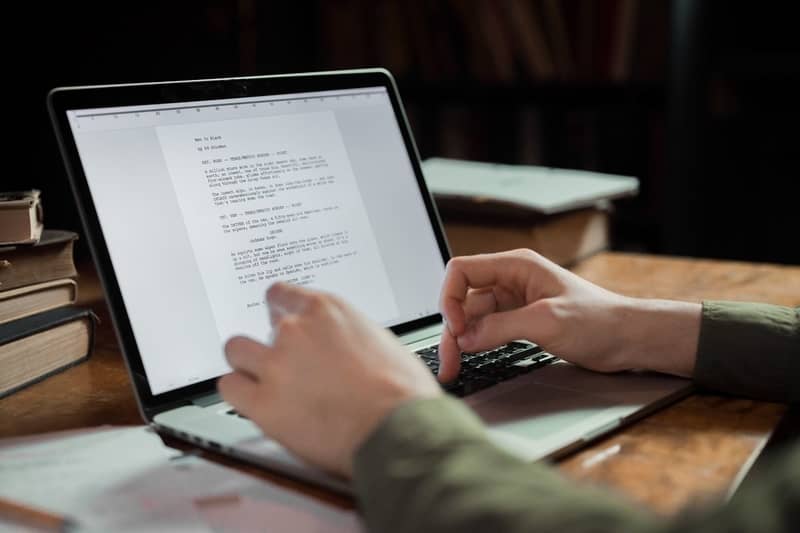
Role 3: Screenwriter – Screenwriters write the film’s script, forming plotlines with explicit directions for the actors to move the production in the way they want it to – but still with enough room for creative freedom for the rest of the production crew; sometimes even leading in parts of the screenplay being removed for a better film piece. I want to take inspiration from screenwriters like Francis Ford Coppola for this section, to create a compelling short story.
Director- Directors are the creative leads of the film, they deal with the creative aspects of production and hold the creative vision throughout the whole process (envisioning the script in a visual form) from pre-production through to the final edit. They are employed by the executive producer/producer, who is ultimately in charge of a production. However, the director is responsible for overseeing the design, production, and final product of a film, this includes everything from casting, to scriptwriting to directing actors on set. Additionally, directors are responsible for hiring their own team including camera operators, editors, and cinematographers. Sources: https://filmlifestyle.com/what-does-a-director-do/ and https://www.screenskills.com/job-profiles/browse/film-and-tv-drama/development-film-and-tv-drama-job-profiles/director-film-and-tv-drama/
Editor- ‘Film editing is the art of selecting the best shots from the footage recorded on location and assembling them into a coherent film. Film editing is a technical part of the post-production process of filmmaking.’ The film editor works with the raw footage, selecting specific shots and then combining them into sequences to create a finished motion picture. – editing can change how you view a scene/moment. Source: https://filmlifestyle.com/what-is-film-editing/
Cinematography– The cinematographer (Director of Photography) is in charge of the camera and the lighting crew. The cinematographer sets the overall look and visuals of the film. A cinematographer works closely with a director to create dynamics on screen and to ensure the directors vision is correctly portrayed-pre-production, but they also work post-production explaining their shots to the editor as they know best what/why they have captured a certain shot. They have creative control over lighting, camera movements/angles, lenses used, camera set up for every shot, the visual style etc. A good cinematographer will consider/introduce ideas and concepts then discuss these with the director for them to ultimately consider. ‘Cinematography is the art of photography and visual storytelling in a motion picture or television show. Cinematography comprises all on-screen visual elements, including lighting, framing, composition, camera motion, camera angles, film selection, lens choices, depth of field, zoom, focus, colour, exposure, and filtration.’ Source: https://www.masterclass.com/articles/film-101-what-is-cinematography-and-what-does-a-cinematographer-do
INSPIRATIONAL PRACTITIONERS:
Director– Sofia Coppola
Some of her trademarks:

Editor- Tom Cross (Works closely with director Damien Chazelle)

Cinematographer- Robert Yeoman (Works closely with director Wes Anderson)




Role 1: Editor-
A film editor, sometimes called a film and video editor, a movie editor, or an editor for film, is a technical professional who removes unnecessary footage and assembles the remaining pieces together to make finished works. Film Editors work on movies, TV programs, commercials, music videos, and other pieces of video content.
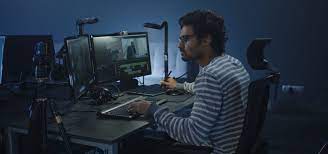
Film editors collaborate with other film professionals, including directors, sound editors, and cinematographers. Their work makes sure that films represent their director’s vision and tell their stories in the most engaging and effective ways. When film editors finish their work, the viewing experience should be seamless, as if the footage was never edited at all.
My inspiration for editing is Zach Staenberg. He has edited films such as The Matrix and The Matrix Reloaded as well as China Lake.

Role 2: Director-
Directors are the creative leads of the film. They hold the creative vision throughout the whole process, from pre-production through to the final edit.

They are employed by the executive producer or producer, who is ultimately in charge of a production. Directors start with a script, and work with a screenwriter and sometimes a script editing team. It’s not uncommon for the director to be the screenwriter as well.
My inspiration for direction is David Fincher. He has directed films such as Se7en, Zodiac and Fight Club.

Role 3: Cinematographer-
Cinematographers play an essential role in film production, dictating the overall look and visual style of a motion picture, television show, music video, or advert. They’re the person responsible for bringing a director’s vision to life on screen, handling all the technical aspects of visual storytelling.
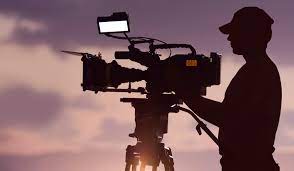
Also known as a director of photography (DP or DoP), the cinematographer heads up the film crew and light crew on the film set. They’re generally involved in the entirety of the film production, from the early storyboarding stage – working on the in-depth visual narrative – right through to post-production.
My personal inspiration for cinematography is Dan Laustsen. He has filmed John Wick 2 and 3 as well as Silent Hill and Nightwatch.
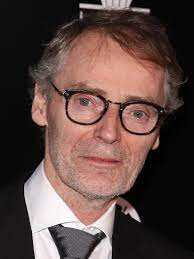
1.Cinematographer of The Shining: John Alcott


I really love Alcott’s use of symmetry in The Shining and would like to take inspiration from it in my own work. The whole mood of the film is dictated by the cinematography elements and I especially love the close up shots used to create discomfort and tension.
2. Sound editor of Dunkirk: Richard King


I’m fascinated by the use of the Shepard tone in Dunkirk and how it builds suspense and I would like to utilise it in my future projects. I also just believe that sound is one of the most important elements of film and find the different uses of sound really interesting.
3. Director of Se7en: David Fincher


Fincher is my all time favourite director and I specifically love the way he blocks the scene and the characters and the mood he creates with his mise-en-scene. I would really like to experiment with mise-en-scene and practice using it in my own work as i really enjoy the little details it gives.
A cinematographer, also known as a Director of Photography, is in charge of the camera and the lighting crew. They’re the person responsible for creating the look, colour, lighting, and for framing of every single shot in a film. The jobs they do are:
A sound editor is responsible for the finished sound in movies and television shows. The tasks involved are selecting, polishing, and assembling…
A director is the creative lead of the film. They hold the creative vision throughout the whole process, from pre-production through to the final edit. The manage the creative aspects of the production. They direct the making of a film by visualizing the script while guiding the actors and technical crew to capture the vision for the screen. The tasks they do are: